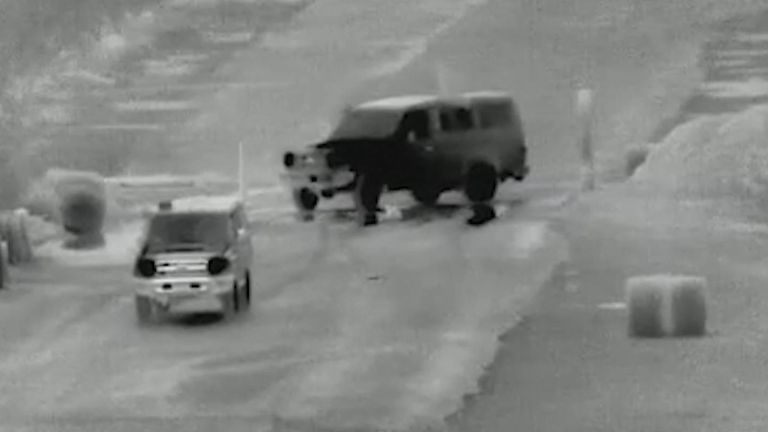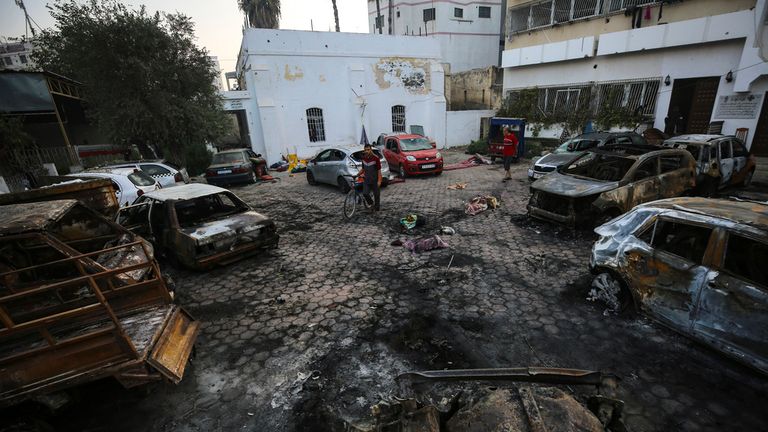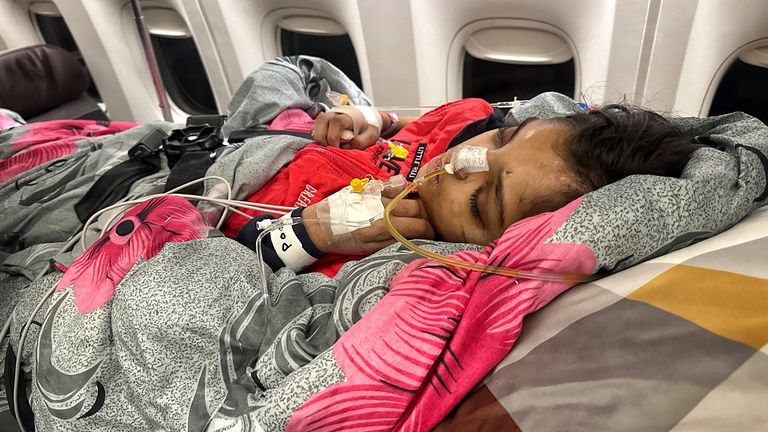British-Palestinian doctor Ghassan Abu Sittah has a methodical way of describing a wound and a dispassionate manner when describing his own interventions.
Take the way he describes the emergency room after a rocket landed on the premises of northern Gaza’s al Ahli hospital on 17 October.
“On my right, I saw a man in his mid-fifties with an amputation at the level of the mid-thigh.
“Like a guillotine amputation, there was blood spurting through the exposed arteries in his stump.
“I took his belt and tied it as a tourniquet… I moved on to another patient who had received a single (piece of) shrapnel to his neck, blood was spurting out of the neck…”
Israel-Gaza latest: Two-day truce extension agreed, say Hamas and Qatar
A highly experienced plastic and reconstructive surgeon, he spent an arduous spell of 43 days in operating theatres in Gaza City.
It is an experience that he variously describes as “dystopian” and “apocalyptic”.
At a press conference in London, the UK-based medic talked about how the nature of the injuries he treated changed over the passage of time.
“Most of the injuries initially were blast injuries, and these were severe soft tissue trauma, severe facial traumas, multiple fractures.
“And then as time went, we saw the introduction of incendiary bombs where the patients would have and over 40% of their total body surface area burned,” he said.
After the Israelis began their ground invasion in Gaza, Dr Abu Sittah says the Israel Defence Forces (IDF) fired white phosphorous bombs in populated areas.
Phosphorous pellets embedded in the skin are extremely difficult to treat.
“I treated white phosphorous burns in the Gaza Strip during the 2009 war. It was very familiar with the characteristic injuries and burns that they make.
“Phosphorus burns right through to the inner core of the body and only stops when it is when it has no exposure to oxygen… the patients would be basically puckered with burns that tore right into the ribs, the bones.”
The Israeli military has denied using white phosphorous bombs in civilian areas in Gaza – and in southern Lebanon.
Israel has not signed an international protocol which bans their use.
Dr Abu Sittah said he managed to enter Gaza via its border with Egypt shortly after Hamas had begun its brutal assault on 7 October.
He told the press conference that he expected Israel to deliver a “vicious response”.
The surgeon said he worked at three hospitals in northern Gaza and was in the operating theatre at the Church of England’s al Ahli hospital when a missile landed in the complex in mid-October.
Read more from Sky News:
Temporary ceasefire extended, say Qatar and Hamas
Released Palestinian prisoners complain of mistreatment
“The false ceiling in the operating room fell on top of us. Luckily, I wasn’t injured, and I walked out of the operating room,” he said.
“The forecourt which had been hit was full of bodies and parts of bodies… I remember walking past the amputated forearm of a child.”
He dismissed the widely-held view – by Western governments and groups like Human Rights Watch – that the weapon in question was likely a malfunctioning missile fired from inside Gaza.
“There was no smell of fuel. When I went back to al Ahli to work there, there was nothing on the ground. You’d think that a missile that was destined for Tel Aviv would be full of fuel.”
Dr Abu Sittah also rejected Israel’s assertions that al Shifa hospital was used as a key command and control centre by Hamas militants.
“At no stage did I see any – at no stage did I see even armed policemen – at Shifa Hospital.
“Even the security men at Shifa were there to just police the number of relatives trying to get all into the emergency departments. They had truncheons.”
Israeli spokespeople and politicians have repeatedly insisted that they are not targeting civilians in Gaza – the fight they say, is against Hamas, not ordinary residents.
In response, the softly-spoken doctor asked the public to look at the stats.
“[There are] 36,000 wounded, over 14,000 dead, around 5,000 more buried under the rubble, statistically.
“Statistically, it appears that the numbers tell a different story. (Look at) their homes that, when you take out 40%, 50% of Gaza’s homes, you can’t possibly have military targets in all of these homes.
“It would be bizarre if all of these homes – and all of these families – and all of these dead kids – were sitting in military installations.”






















